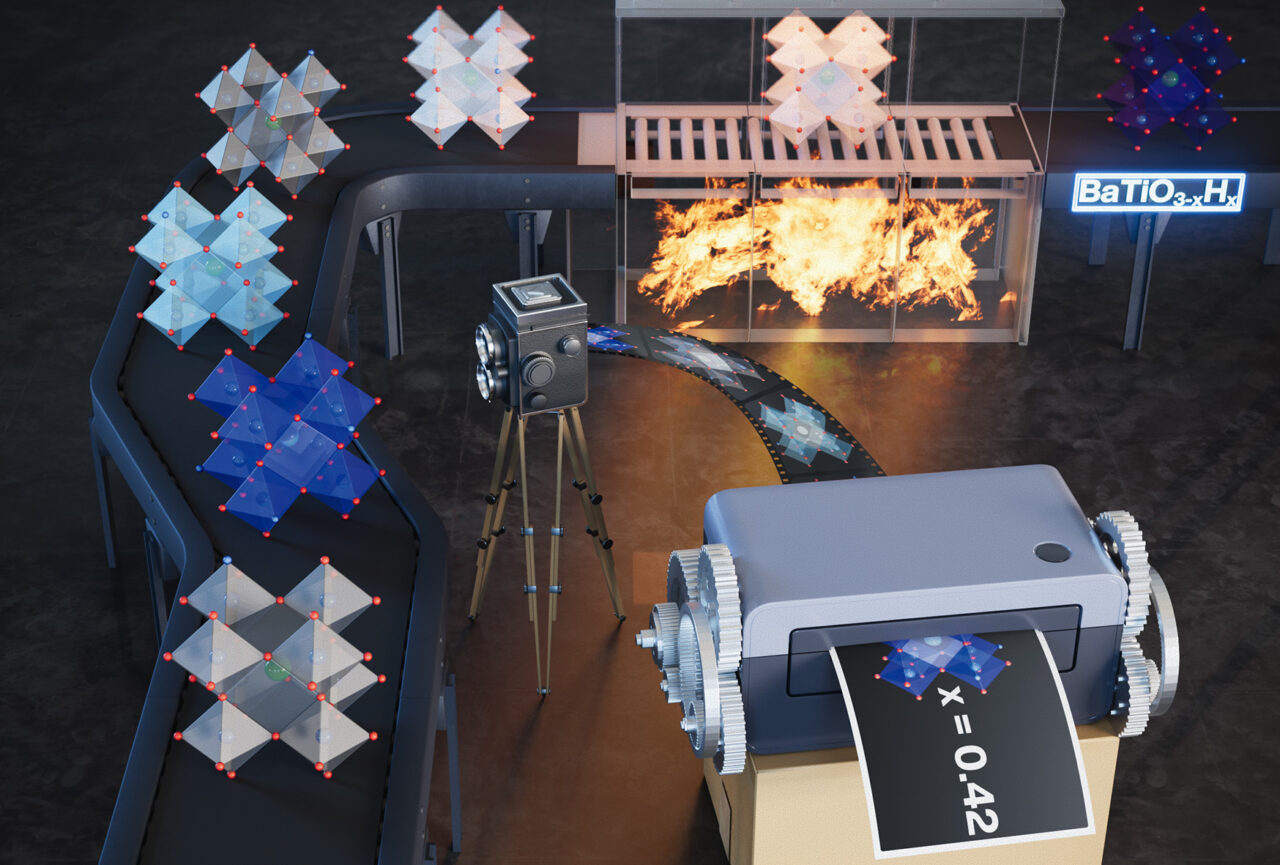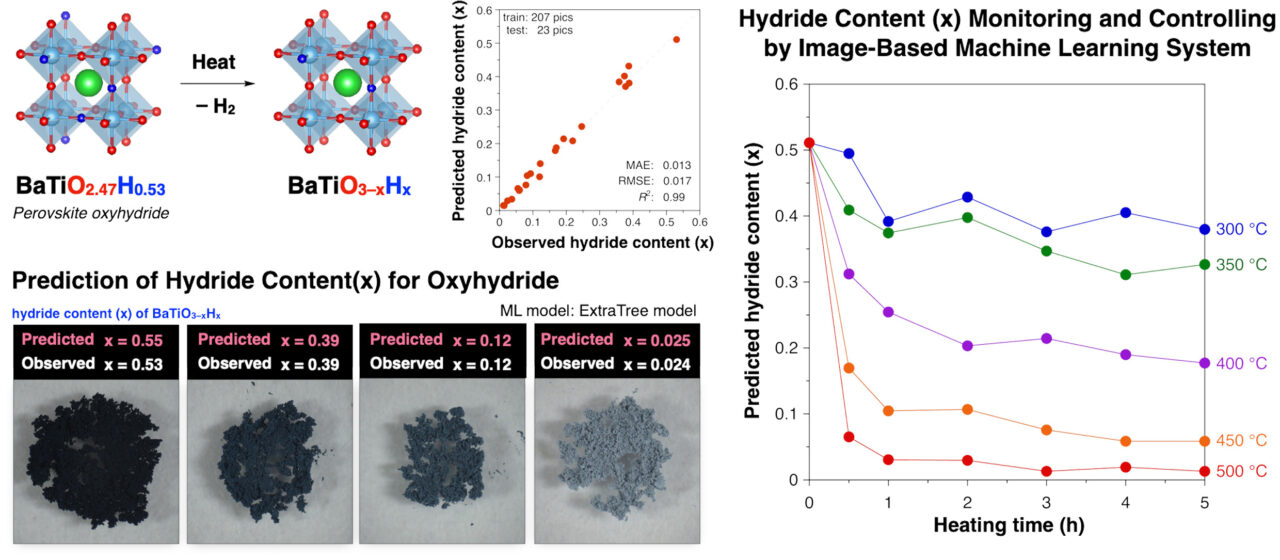
Hokkaido University ICReDD Professor Yasuhide Inokuma, Professor Ichigaku Takigawa, Specially Appointed Assistant Professor Yuki Ide, in collaboration with a team led by Professor Hiroshi Kageyama at Kyoto University, have developed an efficient image-based machine learning system using photographs and achieved control and high-precision prediction of hydride content in perovskite oxyhydride (BaTiO3–xHx) by monitoring the heating reaction.
The hydride content in BaTiO3–xHx with partially substituted hydride ions (H–) for oxygen anions (O2–) is known to be an important parameter that determines the properties of functional materials with various catalytic activities. However, the preparation of precisely controlled hydride content in BaTiO3–xHx has been a difficult challenge due to various reasons, such as the need for long-term measurements, highly specialized techniques, and destructive analysis methods. In this study, we developed an image-based machine learning system using photographs of powder samples as a rapid evaluation method for the hydride content of BaTiO3–xHx.
In the case of the ExtraTrees regression model selected through screening of image-based machine learning models, it was possible to predict hydride content with an excellent accuracy of 0.013 for the mean absolute error (MAE). Since the prediction accuracy of the machine learning system previously constructed with the convolutional neural network (CNN) was almost the same, we adopted the ExtraTrees model known for its low computational cost, and developed a non-destructive and rapid hydride content analysis method.
We attempted to analyze the hydride content of BaTiO3–xHx for different heating temperatures and times using the constructed image-based machine learning system, and confirmed the applicability of the system for long-term reaction monitoring. In addition, this system was shown to be suitable for fine-tuning the hydride content of BaTiO3–xHx in the range of 0 ~ 0.4 by controlling the heating temperature and time. For BaTiO3–xHx powder samples with mixtures of different hydride contents in arbitrary ratios, even for partially mixed and non-uniform samples, the predicted values derived from the image-based machine learning system were similar to the ideal observed values for the mixtures.
This image-based machine learning system was developed for the purpose of predicting the hydride content of BaTiO3–xHx, but it can also be used to analyze various mixed anion compounds by using similar settings. In the field of materials analysis, image-based machine learning systems are very attractive as tools for improving work efficiency because they do not require expensive measuring equipment or advanced analytical techniques, and can be used by anyone as an easily accessible and fast method for high-precision analysis.
The result of this research was published online in ACS Applied Engineering Materials on Saturday, October 12, 2024.
Article Information
Hydride Content Control of Perovskite Oxyhydride BaTiO3−xHx Supported by Image-Based Machine Learning
Taichi Sano, Yuki Ide, Tatsuya Tsumori, Hiroki Ubukata, Ichigaku Takigawa,
Hiroshi Kageyama, Yasuhide Inokuma, ACS Appl. Eng. Mater., 2024, 2, 10, 2391–2396.
(Cover Picture Selected) DOI: 10.1021/acsaenm.4c00417


